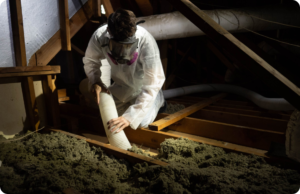Having the right tools on hand empowers homeowners to tackle basic home plumbing tasks. These must-have tools include a plunger and plumber’s snake for unclogging drains; an adjustable wrench for tightening and loosening nuts; and thread seal tape to prevent leaks in pipe connections.
Lastly, a tubing cutter helps homeowners cut plastic and copper with precision. Keeping these handy tools on hand can save homeowners money and stress by allowing them to fix minor issues themselves. Professional Rosenberg Plumbers will help you handle these issues.

Pipe Wrench
Whether you’re an amateur plumber or simply enjoy DIY projects, having the right tools makes plumbing projects much easier. While there are certainly times when calling a professional plumber is the best course of action, having the right tools can help you handle minor problems and save money on water bills and the cost of hiring professionals.
The pipe wrench is a must-have plumbing tool for loosening and tightening pipes and fittings. It has a set of serrated jaws that can grip pipes and other round objects, and it can be adjusted to accommodate different sizes. It’s the Swiss army knife of plumbing tools and is a key part of any plumber’s kit.
Other essential tools for plumbing include a plunger, a drain snake, and a plumber’s soldering torch. A plunger is useful for clearing clogs in sinks, toilets, and tubs, while a plumber’s soldering torch can be used to seal new piping or repair existing ones. A hand auger is another handy plumbing tool that helps you clear clogs when your plunger cannot, and long-nosed pliers are great for getting into hard-to-reach places to pick up hair or adjust fixtures.
Finally, a pair of pliers with slip-joint teeth is a versatile tool that can grip small objects, such as nails, or larger items, like bolts. They’re often used to pull things from sink drains and can even help you recover your lost wedding ring that fell down the shower drain!
A caulking gun and caulk are also important plumbing tools to have. Caulking ensures that your plumbing fixtures, such as bathtubs, showers, sinks, and toilets, are well-sealed to prevent leaks and mildew.
Plunger
While most plumbing issues require professional assistance, equipping yourself with a set of essential tools can help you tackle simple tasks and extend the lifespan of your pipes. This guide outlines the basic tools every homeowner should have, including a pipe wrench, plunger, and more. By learning how to use these tools, you can save money on plumbing service calls and address minor problems quickly and easily.
One of the most traditional plumbing tools, a pipe wrench is indispensable for tightening and loosening nuts and bolts. Its adjustable jaws can accommodate a wide range of bolt sizes, making it a versatile and reliable tool for all types of plumbing projects. A tubing cutter is also an essential item to have in your toolbox. This handy gadget cuts copper, PVC, and PEX pipes with precision, simplifying the process of replacing or repairing sections of piping.
A plunger is a must-have for every home as it can be used to clear minor blockages in toilets and drains. It has a rubber seal that creates a powerful suction that dislodges troublesome clogs. You can choose from a variety of plunger designs, depending on the type of plumbing fixture. For example, a flange plunger is ideal for unclogging toilets while a cup plunger works best for sinks and bathtubs.
Another helpful plumbing tool to have in your kit is a hand auger. This device is a good substitute for a plumber’s snake when tackling serious clogs in sinks and toilets. It consists of a metal wire that is pushed into the drain until it reaches the clog and breaks it up.
Lastly, having a roll of plumber’s putty is another must-have for homeowners. This adhesive is soft and pliable, allowing it to be applied around various fixtures to form leak-proof seals. It can be used for a variety of plumbing projects, from fixing cracked faucets to sealing off water leaks. Make sure to clean the surface of any fixtures or fittings before applying the plumber’s putty.
Plumber’s Snake
A plumber’s snake (also called a drain auger or plumbing snake) is an essential tool for homeowners to have. This is because it can be used to dislodge stubborn clogs that are difficult for a plunger to clear. Clogs are caused by a build-up of hair, food scraps, soap scum, and other debris that can get stuck in pipes or in the drain.
A plumbing snake is a long, flexible metal augur that you guide into a pipe to break up the clog. It can be purchased at most home improvement stores and is relatively inexpensive, especially compared to professional-grade tools that can cost hundreds of dollars. When using a plumber’s snake, it is important to read the instructions carefully and use caution. It is also a good idea to clean the snake after each use, as this will prevent the spread of bacteria or debris and extend its lifespan.
In addition to a plumber’s snake, other basic plumbing tools that every homeowner should have include a pipe wrench, a basin wrench, and a caulk gun. A pipe wrench is a tool designed to grip and twist pipes, and it comes in several different sizes. A basin wrench is a specific type of pipe wrench that can be used to tighten or loosen faucets and other fittings that are hard to reach.
Lastly, a caulk gun is a handy tool for creating and replacing seals around sinks and tubs. It is important to use a high-quality caulk to ensure that the seal is watertight and will not leak. A caulk gun makes this task much easier, as it can be applied to a large surface area with just one pull of the trigger.
A few other basic tools that are useful for minor plumbing jobs include a hacksaw, a tape measure, and a pair of rubber gloves. A hacksaw is a versatile tool that can be used to cut plastic or metal pipes as well as nuts, bolts, and screws. A tape measure is a must for measuring the size of pipes and fittings, as well as the distance between two fixtures. Finally, a pair of rubber gloves helps protect your hands from grime and chemicals while performing plumbing tasks.
Bucket
While many plumbing scenarios require a professional plumber and specialized equipment, there are also many small repairs that homeowners can handle on their own. Having the right tools in place can help make these repairs quick, easy, and affordable.
Whether you’re dealing with a leaky faucet or clogged drain, having the proper tools can save you the cost of a costly call to a professional plumber. The following is a list of essential plumbing tools that every homeowner should have readily available.
Pipe Wrench
A pipe wrench is a heavy-duty tool that you can use to grip and turn pipes of all sizes. It’s important to have a variety of sizes on hand, as each one is designed for specific tasks, such as loosening or tightening the nuts that hold your faucets or showerheads. A specialized variation called a basin wrench, is also useful for working in tight spaces such as underneath sinks.
Plunger
A plunger is a versatile and inexpensive plumbing tool that can be used to clear clogged toilets and drains. There are a few different varieties of plungers on the market, including both flange plungers and cup-style plungers. It’s also a good idea to have a hand auger, which is a flexible coiled rod that can be fed into a drain to break up and dislodge clogs.
Tape Measure
A tape measure is a simple, yet indispensable plumbing tool. It’s used to determine the size of pipes and fittings as well as the distance between two fixtures. It’s also useful for ensuring that all connections are properly sealed to avoid water and air leaks.
Plumber’s Tape
Also known as Teflon tape, a plumber’s tape is a durable adhesive that can be wrapped around pipe threads to create a tight seal. When working with new pipe connections or repairing leaks, it’s crucial to wrap the threads of all joints with this essential material to prevent future problems.
Tubing Cutter
A tubing cutter is a quick and easy way to cut piping for repairs. It’s a handy tool to have on hand as it can save you time and money by eliminating the need for cutting and re-tying.





